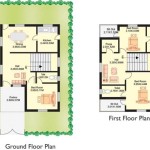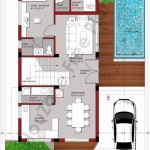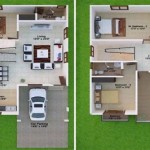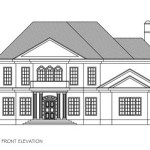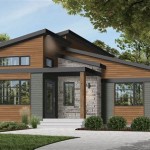Container Living Floor Plans: Designing Your Ideal Space
Container homes offer a unique blend of affordability, sustainability, and design flexibility. A well-planned floor plan is crucial to maximizing the potential of these compact spaces. This article explores various container living floor plans and key considerations for designing a comfortable and functional home.
Single Container Homes: Compact and Efficient
Single container homes, typically using a 20-foot or 40-foot shipping container, are ideal for individuals or couples seeking minimalist living. These compact spaces require careful planning to optimize every square foot.
Key Considerations:
- Maximize vertical space with lofted beds or storage.
- Incorporate built-in furniture to save space.
- Prioritize natural light with strategically placed windows and doors.
Double Container Homes: Expanding the Possibilities
Joining two containers, either side-by-side or end-to-end, creates a larger living space with more design options. This layout allows for a clearer division between living areas, such as separating the bedrooms from the common areas.
Key Considerations:
- Consider how the containers will be connected and the impact on structural integrity.
- Plan the placement of shared walls to minimize disruption to the flow of the home.
- Explore different configurations to create distinct zones for living, sleeping, and dining.
Multi-Container Homes: Modular and Versatile
Multi-container homes, using three or more containers, offer the greatest flexibility in design and layout. These modular structures can be arranged in various configurations, including stacked or staggered arrangements, to create unique and spacious homes.
Key Considerations:
- Consult with a structural engineer to ensure the design is sound and stable.
- Think about the overall aesthetic and how the containers interact with each other.
- Plan for adequate insulation and weatherproofing to maintain a comfortable indoor environment.
Open Floor Plans: Creating a Sense of Spaciousness
Open floor plans are particularly well-suited to container homes, as they maximize the available space and create a sense of airiness. By minimizing internal walls, natural light can flow freely throughout the home.
Key Considerations:
- Define different areas using furniture placement and rugs.
- Consider the placement of kitchen appliances and bathroom fixtures to maintain a functional layout.
- Utilize high ceilings and large windows to enhance the feeling of spaciousness.
Studio-Style Floor Plans: Compact and Functional
Studio-style floor plans are a popular choice for single container homes or smaller multi-container configurations. These layouts combine living, sleeping, and kitchen areas into a single open space.
Key Considerations:
- Use furniture strategically to delineate different zones within the open space.
- Prioritize storage solutions to keep the space clutter-free.
- Choose furniture that is appropriately scaled for the size of the container.
Incorporating Outdoor Spaces: Extending the Living Area
Decks, patios, and balconies can significantly enhance the living space of a container home. These outdoor areas provide space for relaxation, entertainment, and connection with nature.
Key Considerations:
- Consider the climate and how the outdoor space will be used throughout the year.
- Plan for appropriate shading and protection from the elements.
- Integrate the outdoor space with the interior floor plan to create a seamless flow.
Sustainable Design Considerations: Eco-Friendly Living
Container homes offer inherent sustainability benefits by repurposing existing structures. Furthering these benefits involves integrating eco-friendly materials and practices into the design.
Key Considerations:
- Utilize recycled and sustainable building materials.
- Incorporate solar panels for renewable energy generation.
- Implement water-saving fixtures and appliances.
- Maximize natural ventilation and daylighting to reduce energy consumption.
Choosing the Right Floor Plan: Meeting Individual Needs
The ideal container home floor plan will depend on individual lifestyle, budget, and desired aesthetic. Careful consideration of these factors will ensure a comfortable and functional living space.
Key Considerations:
- Assess your current and future space requirements.
- Establish a realistic budget for the project.
- Research different container home designs and floor plans for inspiration.
- Consult with a professional architect or builder to discuss your specific needs.

9 Container Home Floor Plans That Maximize Space House

Container Home Floor Plans Types Examples Considerations Cedreo

Container House Plans Making A Home In Living Contain Design

Container Home Floor Plans Structures Layouts More Ideas

Container Home Plans Blueprints Housing

Intermodal Container Home Floor Plans Below Are Example One Two Three Bedroom Residential Primer Rscp

Custom Florida House Plans Container Home Mangrove Bay Design Lighting Studio

Container Home Floor Plans Structures Layouts More Ideas

View All Floor Plans Custom Container Living

Container Home 6 Floorplan Design Plans House
Related Posts

